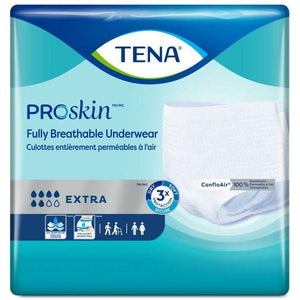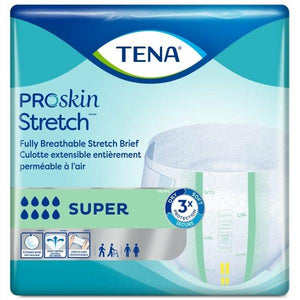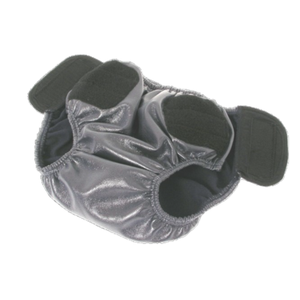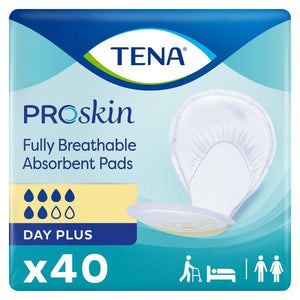Bed Wetting Strategies - A Parent's Guide to Dry Nights
Parents of bed wetters - you are not alone!
Know that bed wetting is often a normal part of growing up. Most children don't stay dry at night until about the age of 3. And it's usually not a concern for parents until around age 6. There are ways to work toward dry nights as a family.
Here's a guide to avoiding the wet nights, guilt, and anxiety attached to the problem of nighttime wetting...
If you and your child are finding wet beds frustrating, perhaps bewildering, you aren’t alone! Every day, we hear from at least one mother, father or grandparent of a child who still wets the bed.
"He doesn't seem to care that we need yet another mattress. What can I get for him so that he's not soaking the new one?"
"I feel like a lousy parent. I start every day mad at my daughter. She's in tears because we are doing laundry every morning and the other kids tease her every time."
Bed wetting is stressful...
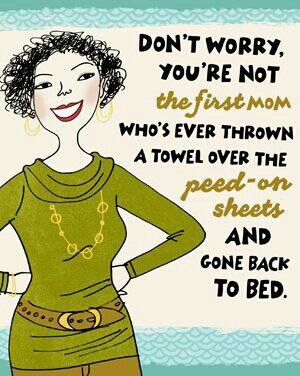
The reality is there is no specific age when all children stop bed wetting. In fact, your child may stop wetting the bed all of a sudden, or it could be a gradual process over a few months with a few nighttime accidents in between.
Though many children stay dry at night by age 5, nighttime wetting remains an issue in about 15% of children.
According to the Mayo Clinic, nighttime wetting can affect anyone, but it’s more common in boys than girls.
And if both parents wet the bed as children? Their child has an 80% chance of wetting the bed.
There are many factors that contribute to nighttime wetness. Most often, it’s due to the fact that bladders are not fully developed and the nerves that control the bladder and brain relationship are still maturing and forming important connections.
It’s not uncommon for children who are heavy sleepers to not recognize or feel a full bladder at night, so they don’t wake to go to the bathroom. Also, your child’s bladder may not be big enough yet to hold all the urine that they produce during the night hours.
Another thing to consider is chronic constipation — it may also cause nighttime wetting by pushing on and decreasing the size of the bladder, making it important to treat constipation if this is an issue for your child. In addition, if there is any pain during urination, increased frequency of nighttime wetting, or daytime wetting, it is important to schedule an appointment with your pediatrician for tests to detect problems like urinary tract infections.
Say goodbye to wet beds!
We understand how bladder leak protection products work. We carry washable bedding and bed pads plus disposable bed pads and a large selection of overnight underwear that fit across all kinds of size requirements.
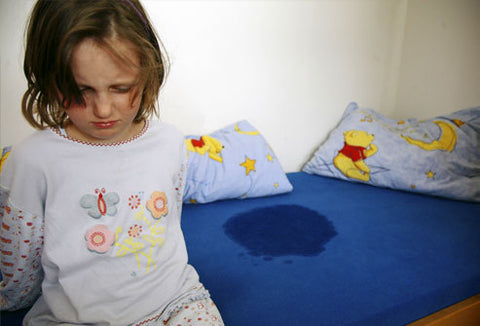
Given the number of parents we speak to, we know how the frustration can build.
We want to help, by helping you find and choose the right product for your child and the bed quickly and easy.
Our team developed an e-book that we'd love to share with you.
Not only will this free e-book offer survival tips - you will learn coping mechanisms, bedtime routines, and more. We welcome you to download - click the cover image below - our Bed Wetting Strategies - Parents' Guide for Dry Nights for your free e-book (in PDF format.)
Download Your Free "Bed Wetting Strategies for Dry Nights" Ebook (PDF)
Our Parents' Guide makes finding and choosing the right product for your child and the bed fast and easy. Not only will this free e-book offer survival tips - you will learn coping mechanisms, bedtime routines, and more!
We carry over 100 products to help Canadian families cope with bladder control issues, and like you, we've found that not one manufacturer has the same quality standards or levels of absorbency or capacity as the others. It makes it darned hard to compare and contrast what you need without spending lot of time and effort while you hunt.
As an online company, My Liberty has no restrictions on what we make available to our customers. This allows us to bring you the biggest selection and range of sizes available—regardless of where you live in Canada.
We know that each parent of a bed wetter is searching for the right answer, digging deep for more patience, and really, really hoping for a dry bed tomorrow morning. Sit back and relax, because our team has done the work for you.
Quality. Fit. Capacity.
That’s what it’s all about.
- Quality — The brands we've chosen for you have outstanding construction, unbeatable absorbency, first-rate odour control, overall capacity to contain leaks and an ability to be good to your child's skin.
- Fit — The last thing your child needs is leaky underwear. When your child graduates out of store-bought diapers and pull-ups for toddlers, you move from buying according to weight to buying according to waist or hip size. Where appropriate, all of our products are available in a wide range of sizes.
- Capacity — We have specialized underwear and briefs or diapers that accommodate a wide range of sizes and bladders. If your child goes more than once during the night - you are looking for at least a Moderate absorption rating for anything we sell.
Urine output calculation: children versus adults
To find the right product for your child, it's best to understand how much needs to be absorbed in a 'typical' overnight. Start by using this simple way to figure out how much urine your child is passing in a given 'void':
Option 1 (in ounces): Take your child’s age and add 2. That’s how many ounces of urine the child is passing. A five-year old, for example, will pass 7 ounces (age + 2 = 7).
Option 2 (in millilitres): Take your child’s age, add 2 and multiply by 30. That’s how many millilitres of urine the child is passing. A five-year old, for example, will pass 210 millilitres. ([age + 2] x 30 = 210 ml)
Compare those numbers to adults, who pass an average of 8 ounces (1 cup) of urine or 237 millilitres at a time.
Next - what has past experience taught you? Is your child's bed wetting occasional pees between days or multiple pees per night?
Thus, as your child grows, it's critical to find products that are based on capacity, or how much the product can hold before needing a change, or before leaking.
It's no longer about picking products based your child's weight alone
Unlike baby diapers, it's now time to find products that meet your child's volume of fluid output, over time.
If you are looking for underwear, you should be looking for longer, overnight coverage to ensure the maximum amount of comfortable sleep time.
At My Liberty, we are committed to helping you get what you need quickly and easily. Since the product manufacturers don't use the same language to describe their products, it can be difficult to understand the difference between "moderate protection" compared to the "heavy protection" described by others.
To help you sort it out, we’ve developed a standardized Total Capacity Rating system that we use across all the brands and incontinence products we sell. Our Bed Wetting Strategies - Parents’ Guide to Dry Nights is especially tailored to help you match up products easily for your child.
Watch for the Total Capacity Rating on the briefs and underwear we sell to make sure the products you choose are right for your child.
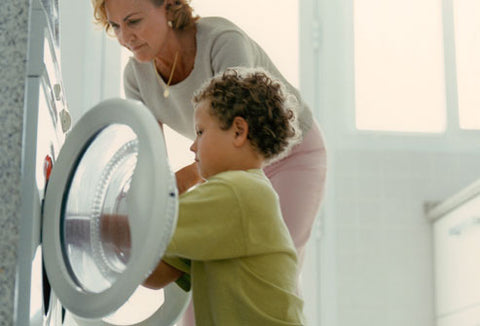
Download your Bed Wetting Strategies - Parents' Guide for Dry Nights eBook (PDF), which offers helpful tips and information while waiting for nature to take its course.
Download Your Free "Bed Wetting Strategies for Dry Nights" Ebook (PDF)
A child who wets the bed needs your support...
Reassure your child by being supportive. He isn't wetting the bed on purpose. And bed wetting isn't typically a sign of an emotional or physical problem. Explain that it is normal, very common, and that he won't always wet the bed.
The Canadian Paediatric Society lists strategies for parents hoping their kids will outgrow bedwetting. They include:
- Clarify the goal of getting up at night and using the toilet.
- Assure the child’s access to the toilet.
- Avoid caffeine-containing foods and excessive fluids before bedtime.
- Have the child head to the washroom at bedtime.
- Include the child in morning cleanup in a non-punishing manner.
- Preserve the child’s self-esteem.
We all want our children to be happy, loved, safe and nourished. Without a good night's sleep—for them and for you—the work of parenting can be more difficult than it has to be. We've looked at all of the products available and found some wonderful options that lets the entire family sleep undisturbed. Just imagine!
Bed Wetting Quiz
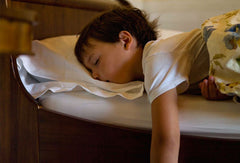
A) True
B) False
The correct answer is: A. Absorbent undergarments do not prolong nighttime wetting.
"Almost all children with enuresis (bed wetting) have a family member who suffered with it, and bed wetting predictably goes away at about the same age as it did for those other family members," says Dr. David Fay, a family physician with Waukesha Family Practice Residency Program and expert adviser for iParenting.com. "In my opinion, special underwear has no relation to when children will begin to stay dry." (Kimberly-Clark)
Download our ebook for the full quiz to share with your child!
What does your child think about bed wetting?
Even though your child may not tell you how they feel, no child likes to wet the bed. Here are some things that kids say about their bed wetting:
"I get really angry with myself."
"I feel like a baby."
"I can't stay over at friends' houses."
“I can’t invite anyone to stay over at my house”
"I can’t go to camp."
"I pray before I go to sleep that I won’t wet the bed."
Here's some help. Get your free e-book today...
Download Your Free "Bed Wetting Strategies for Dry Nights" Ebook (PDF)
We understand about bed wetting.
We've put together some of the best solutions for you. They range from special bedding, bed pads, diapers and underwear – all made especially with the older bed wetter in mind. Because we are moving out of the toddler world, we need to know how much urine your child passes so that you can buy the right products.
Here’s a simple way to figure out how much urine your child is passing:
- Option 1(in ounces): Take your child’s age and add 2. That’s how many ounces of urine the child is passing. A five-year old, for example, will pass 7 ounces (age + 2 = 7).
- Option 2(in milliliters): Take your child’s age, add 2 and multiply by 30. That’s how many milliliters of urine the child is passing. A five-year old, for example, will pass 210 milliliters. ([age + 2] x 30 = 210 ml)
There are several choices you and your child can make.
Diapers/Briefs
Underwear
We help you find the right bed wetting products for your child.
As the parent of a bed wetter, you can count on MyLiberty.Life to work with you to provide an array of solutions for your child's bed time needs.
From bed pads and underwear to briefs and bedding, we invite you to browse our selection that includes some of the best products on the market today. These products offer a range of protection levels—from Light to Maximum—to ensure that you have one less thing to worry about.
Our Bed Wetting - Parents’ Guide to Dry Nights is free. It will ease your guilt, offer some coping tips and help you understand how to make your bed wetter easier to live with.
A happy morning is a click away...



